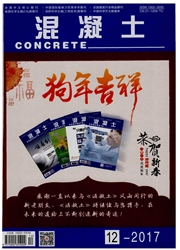

 中文摘要:
中文摘要:
通过试验研究,完成了多年冻土区桥梁钻孔灌注桩混凝土水化放热特性的定量化分析,确定了灌注桩混凝土在不同持续低温环境下水泥水化程度随龄期变化的增长规律,进而为青藏铁路多年冻土区灌注桩混凝土施工提供理论依据。水泥水化在持续低温的环境下进行时,水泥水化特性发生了很大程度的改变,持续低温水化环境下水泥放热在不同的龄期都较水泥水化温度不受限制时有很大减少,且水化环境的温度越低,放热的减少量也越多,当持续低温环境为(3±1)℃时,水泥水化3 d放出热量为初始水化温度为5℃、水化温度不受限制时的放热量的36.6%,水泥水化7 d放出热量为初始水化温度为5℃、水化温度不受限制时放热量的69%。本研究也通过分析试验数据得出了水泥水化特性受持续低温环境影响下的水化热计算式,使得持续低温环境下的水泥水化特性得到了初步的数学描述,为进一步研究多年冻土灌注桩混凝土强度发展规律提供了良好的铺垫。
 英文摘要:
英文摘要:
By experiment research,completed a quantitative analysis of concrete hydration heat release characteristics of cast-in-place bored bridge piles in the permafrost regions,and determined how the degree of hydrationchange over time under the effect of sustained low temperature environment,and to further provide theoretical basis forcast-in-place bored bridge piles in the construction of the Qinghai-Ti-bet railway.Great changes have taken place in the cement hydration characteristics when the cement pastehydration under the condition of sustained low temperature environment,and the reduction will be more when the temperature of environment becomes lower,for example, when the hydration was completed under the sustained low temperature of (3±1)℃,the hydration heat quantity in three daysis only 36.6%of the hydration heat of cement paste without any temperature limits,and the hydration heat quantity in seven days was 69.0%of the hydration heat of cement paste without any temperature limits.At last,through analysis of experimental data tocomplete the calculation model which considering the hydration of cement paste under the condition of sustained low temperature environment ,and made concrete hydration heat release characteristics get a preliminary mathematical description ,provides a good foundation for furtherresearch of theintensity ofcast-in-place bored bridge piles in the permafrost regions.
 同期刊论文项目
同期刊论文项目
 同项目期刊论文
同项目期刊论文
 期刊信息
期刊信息
